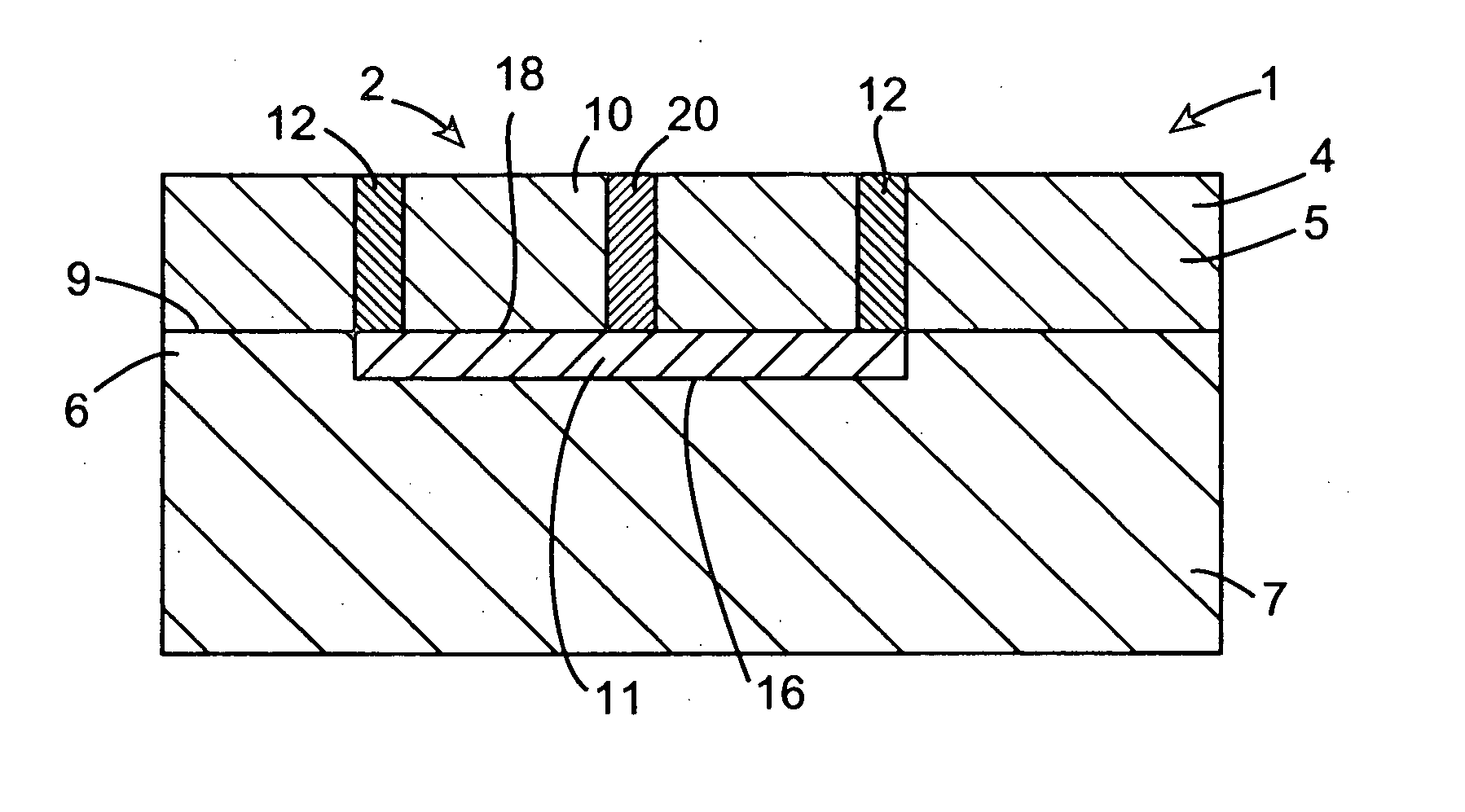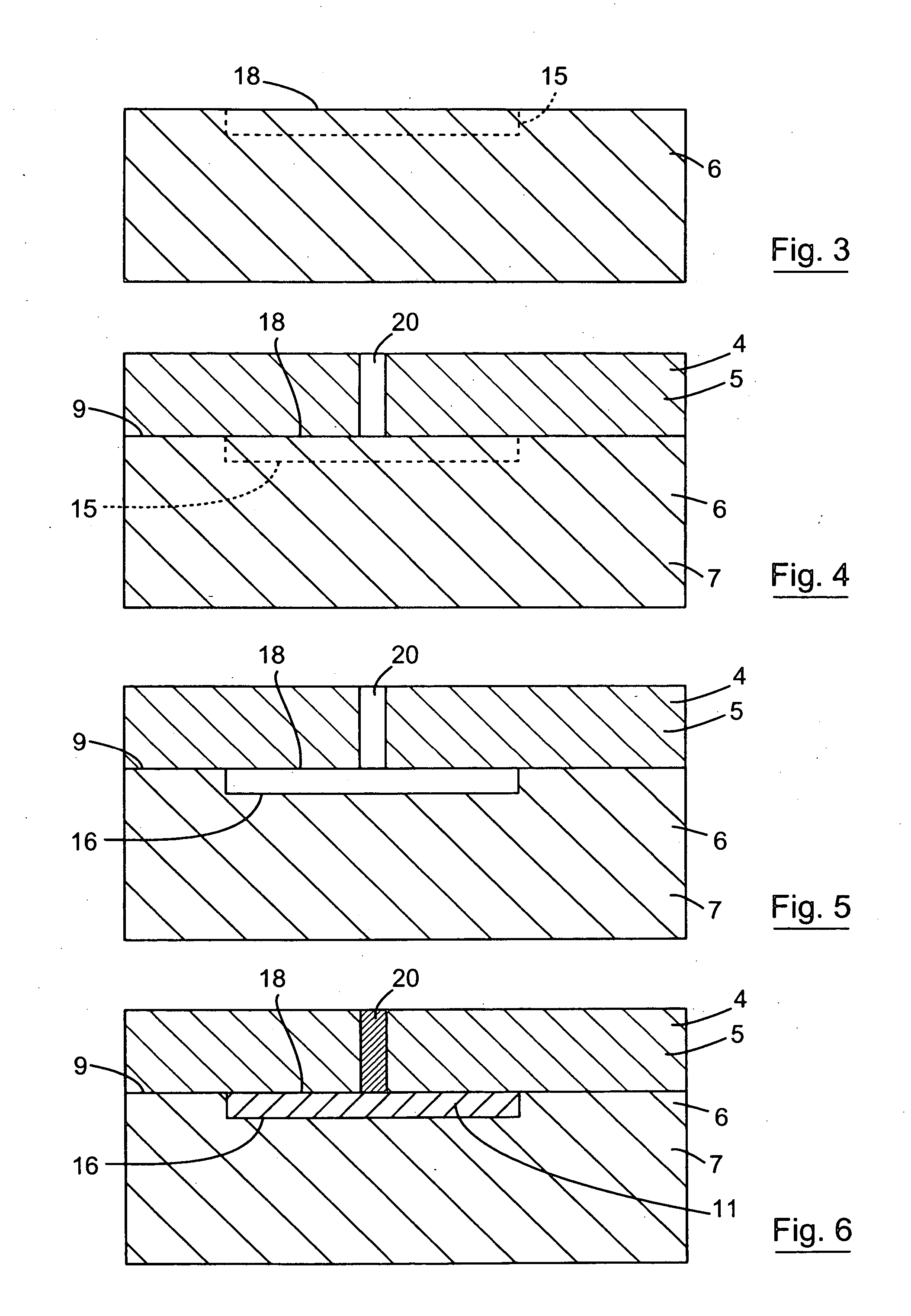Method for forming a cavity and an SOI in a semiconductor substrate, and a semiconductor substrate having a buried cavity and/or an SOI formed therein
a semiconductor substrate and cavity technology, applied in semiconductor/solid-state device manufacturing, basic electric elements, electric instruments, etc., can solve the problems of inability to achieve a good bond between the surface surfaces of the wafer, current leakage from electronic devices subsequently formed in the substrate, and high production cost of thick epitaxial silicon layers. , to achieve the effect of accurate location and accurate formation
- Summary
- Abstract
- Description
- Claims
- Application Information
AI Technical Summary
Benefits of technology
Problems solved by technology
Method used
Image
Examples
Embodiment Construction
[0084] Referring to the drawings and initially to FIGS. 1 to 6, there is illustrated a semiconductor substrate according to the invention, indicated generally by the reference numeral 1, which comprises a silicon-on-insulator (SOI) 2 formed therein. The semiconductor substrate 1 is formed by a method which is also according to the invention. The semiconductor substrate 1 comprises a pair of semiconductor wafers, namely, a first wafer 4 which forms a device layer 5 of the semiconductor substrate 1 and a second wafer 6 which forms a handle layer 7. The first and second wafers 4 and 6 are of single crystal silicon and are directly bonded together by high temperature anneal bonding along a bond interface 9. The SOI 2 is formed by a portion 10 of the first wafer 4 beneath which a laterally extending buried insulating layer 11 is formed as will be described below. An electrical isolation trench 12 extends around the portion 10 of the first wafer 4 which forms the partial SOI 2 for insulat...
PUM
 Login to View More
Login to View More Abstract
Description
Claims
Application Information
 Login to View More
Login to View More - R&D
- Intellectual Property
- Life Sciences
- Materials
- Tech Scout
- Unparalleled Data Quality
- Higher Quality Content
- 60% Fewer Hallucinations
Browse by: Latest US Patents, China's latest patents, Technical Efficacy Thesaurus, Application Domain, Technology Topic, Popular Technical Reports.
© 2025 PatSnap. All rights reserved.Legal|Privacy policy|Modern Slavery Act Transparency Statement|Sitemap|About US| Contact US: help@patsnap.com



